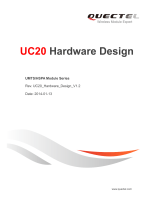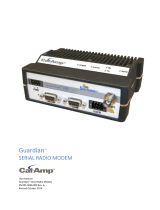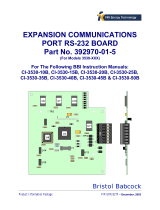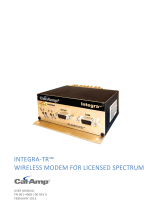Texas Instruments Understanding Power Requirements in RS-232 Applications (Rev. B) Application notes
- Type
- Application notes
Texas Instruments Understanding Power Requirements in RS-232 Applications (Rev. B) is a document that provides insights into the power requirements and consumption of RS-232 applications, particularly focusing on the DS14C335 device. It covers the various hardware handshaking circuits involved in RS-232 communication, including DCD, RXD, TXD, DTR, DSR, RTS, CTS, and RI. The document explains the flow of hardware handshaking between a local and remote terminal, emphasizing the role of each circuit in establishing and maintaining communication.
Texas Instruments Understanding Power Requirements in RS-232 Applications (Rev. B) is a document that provides insights into the power requirements and consumption of RS-232 applications, particularly focusing on the DS14C335 device. It covers the various hardware handshaking circuits involved in RS-232 communication, including DCD, RXD, TXD, DTR, DSR, RTS, CTS, and RI. The document explains the flow of hardware handshaking between a local and remote terminal, emphasizing the role of each circuit in establishing and maintaining communication.









-
 1
1
-
 2
2
-
 3
3
-
 4
4
-
 5
5
-
 6
6
-
 7
7
-
 8
8
-
 9
9
Texas Instruments Understanding Power Requirements in RS-232 Applications (Rev. B) Application notes
- Type
- Application notes
Texas Instruments Understanding Power Requirements in RS-232 Applications (Rev. B) is a document that provides insights into the power requirements and consumption of RS-232 applications, particularly focusing on the DS14C335 device. It covers the various hardware handshaking circuits involved in RS-232 communication, including DCD, RXD, TXD, DTR, DSR, RTS, CTS, and RI. The document explains the flow of hardware handshaking between a local and remote terminal, emphasizing the role of each circuit in establishing and maintaining communication.
Ask a question and I''ll find the answer in the document
Finding information in a document is now easier with AI
Related papers
-
Texas Instruments AN-1240 Video Transmission Over Twisted Pair Wire (Rev. C) Application notes
-
Texas Instruments Low-Voltage, Single-Supply 232-Standard Interface Solutions (Rev. A) Application notes
-
Texas Instruments Comparing Bus Solutions (Rev. C) Application notes
-
Texas Instruments AN-915 Automotive Physical Layer SAE J1708 and the DS36277 (Rev. B) Application notes
-
Texas Instruments Building your own Battery Simulator Application notes
-
Texas Instruments Client Side Telephony (CST) Chip Software (Rev. A) User guide
-
Texas Instruments AN-1057 Ten Ways to Bulletproof RS-485 Interfaces (Rev. B) Application notes
-
Texas Instruments RemoTI Network Processor Developer’s (Rev. A) User guide
-
Texas Instruments AN-664 ISDN Basic Rate Interface Terminal Equipment (TE) System Design Application notes
-
Texas Instruments AN-1521 POEPHYTEREV-I / -E (Rev. C) User guide
Other documents
-
Guardian Technologies K1148-X 4/98 User manual
-
 LapLink MN-LGD011-XX-US User manual
LapLink MN-LGD011-XX-US User manual
-
Digi PC/Xe User manual
-
 Quectel Wireless Solutions XMR201312UC20 User manual
Quectel Wireless Solutions XMR201312UC20 User manual
-
Digi PC/Xe User manual
-
ZyXEL U-336SA User manual
-
 CalAmp GUARDIAN User manual
CalAmp GUARDIAN User manual
-
 Remote Automation Solutions Bristol Expansion Comm Port RS232 Board for Models 3530-xxx Owner's manual
Remote Automation Solutions Bristol Expansion Comm Port RS232 Board for Models 3530-xxx Owner's manual
-
Digi PC/Xe User manual
-
 CalAmp Integra-Tr User manual
CalAmp Integra-Tr User manual













